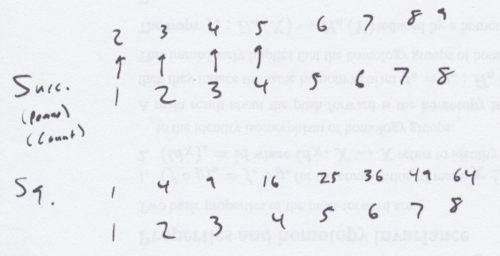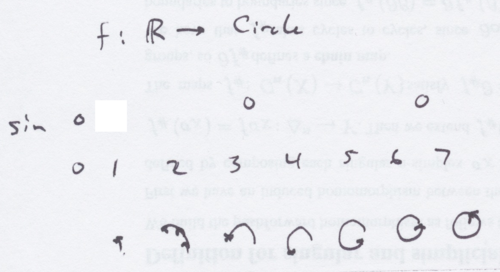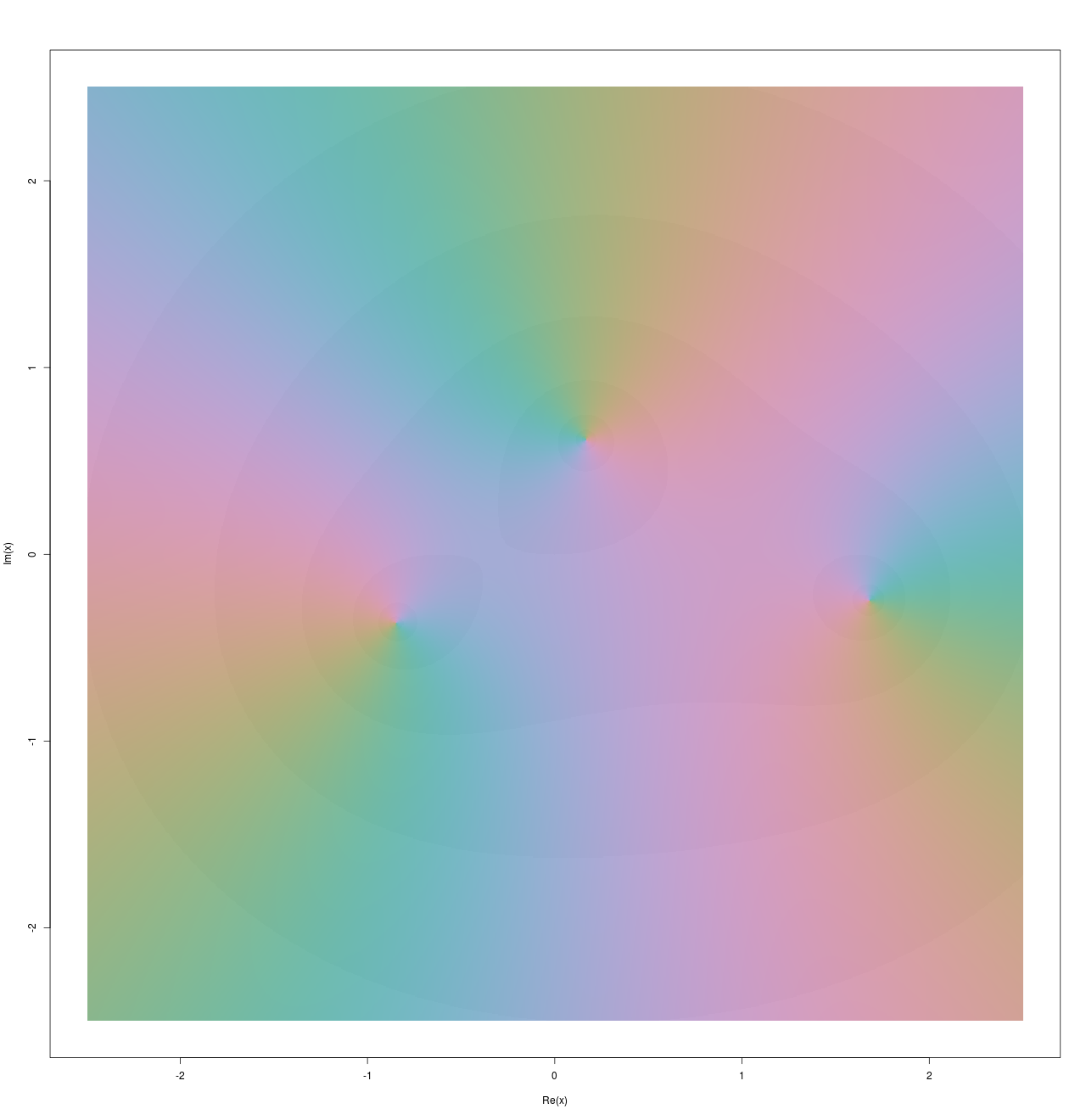-1. Ask what $D^{50} \left\{ \ x^{100} \ \right\}$ is. Stop them from actually multiplying the coefficients; just leave them unmultiplied the way you would for a prime decomposition. Define factorial and show how $\displaystyle \prod_{50}^{100} \bullet = {100! \over 50!}$ shows up naturally in this context of repeated derivatives. This proves that arbitrary number of $D$'s of a polynomial is easy.
- By fundamental theorem of algebra, $\mathrm{Polynomials}$ cover all functions (so, school algebra can work in the real world)
- By Taylor's approximation, $\mathrm{Finite\ Polynomials}$ can get you close (so, it actually could work, in the real-real world)
- Each polynomial is "just a" sequence. (The covector of coefficients to the one basis-vector $(\ldots, x^{-1}, x^0, x^1, x^2, \ldots)$ (with $x^0$ moving the root to wherever you want



- We can understand sequences. (There is an analogy to digits, possibly negative, in base $x$, but that could be ignored.) We have a shift / lag operator ($D$) on these sequences. (−1) So symbolic differentiation & integration of these letters / strings / symbols, gives us an "Easy way to do calculus" (No hard integrals! Only polynomials). If most functions can be written this way (1), and we can even know beforehand (in the planning phase) how good of a job this approach will do (2),
Now play around with them — do ℂ→ℂ Wegert-plots and Cartesian ℝ→ℝ plots, and input/output tables 
 to see how varying the "sliders" (entries in the covector of coefficients) changes the shape of the output in the various views (Cartesian, Wegert, tabular). A computer/interactive setup could be the best here. Just mess around and try to get the output to do cool stuff.
to see how varying the "sliders" (entries in the covector of coefficients) changes the shape of the output in the various views (Cartesian, Wegert, tabular). A computer/interactive setup could be the best here. Just mess around and try to get the output to do cool stuff.

exp(ζ)/(ζζζ−ζζ−ζ+i)

{ ζζζ−ζζ−ζ+i } / { log(ζ)+i }
(For the ℂ→arg ℂ plots you want to tell them that arguments swirl around the roots ($\arg \zeta$ takes on every argument at 0)

For applications, you can point to some interesting things to do with ℂ maps (dynamical systems, root finders, some of http://arminstraub.com/math/what-is-column).
Further applications you can discuss net present value, the geometric series (and the dumb geometric-series trick), the second dumb trick of subtracting two shifted geometric series to get a finite one (since no-one lives forever), and how although rates-of-return might vary in reality, we've now carved out some "easy cases" that we can do back-of-the-envelope, as quickly as $1 \over 1-r$ $- \mathrm{ shift} \left\{ 1 \over 1-r \right\}$ to put some easy bounds on real-world cases. (If your students don't already know how to compute a NPV in Excel, then here is your chance to teach them the only mathematics they will actually need to know in 90% of office jobs.)
You can also tell them they now understand (finally) what $e$ is. All the little kids are just made to use it, they can now explain it. (Identify it with the covector $(1,1,1,1,1,\ldots)$ once you adjust by $/ \sim k!$.) And show how $D(e^{\bullet}) = e^{\bullet}$ via $(1,1,1,1,\ldots) \overset{D}{\mapsto} (1,1,1,\ldots)$. Reinforce the shift-arithmetic on symbols p.o.v., mention why this makes $\exp$'s a good basis for ODE's, and mention the "slick" version of instantiating $\sqrt{-1}$ (simply assume it) --- versus seeing it in series. (So which is better? Chance to make a value judgement / form an opinion on mathematical beauty.)
It's not a bad time either to talk about the history of $\sqrt{-1}$: it was only possible to discover this "algebraic" / "axiomatic" / "slick" thing (with so many implications) by using stuff from another part of mathematics (analysis, but let's call it series / string-ops). By staring at and doodling around (mention Ramanujan) with the $\exp$ series, only if you've also tried to approximate the circle height function ($\sin$) and its cousin by infinite-approximation (mention Aristotle)
To me $\sqrt{-1}$ comes from the intersection of different areas of mathematics, i.e. from different ways of thinking being tied together by writing down on paper. This is a thesis about the way mathematics works as well as about creativity, exploration, proof, dealing with your own ideas, how paper can help you organise your thoughts. (in other domains perhaps, as well)
Now the discussion has gone from meaningless symbol-scratching to high-level.
The usual approach (Stewart) is, in my opinion, insane. I would show the Stewart chapters as enrichment. This is heavy symbol scratching with no motivation why it matters at all. Yet another exercise in making people do mechanical calculations, instead of teaching them anything about mathematics.
Series are here to make our lives easier. They either make the impossible possible (formal power series, Ramanujan stuff) , make hard integrals turn into shift-operators, or they give you some peace-of-mind that (pretty much) any ℝ→ℝ mapping the real world might throw at you, can be reduced to some stuff you could do on paper, in a symbolic differentiator, etc. Reduced to essentially a string / list.








